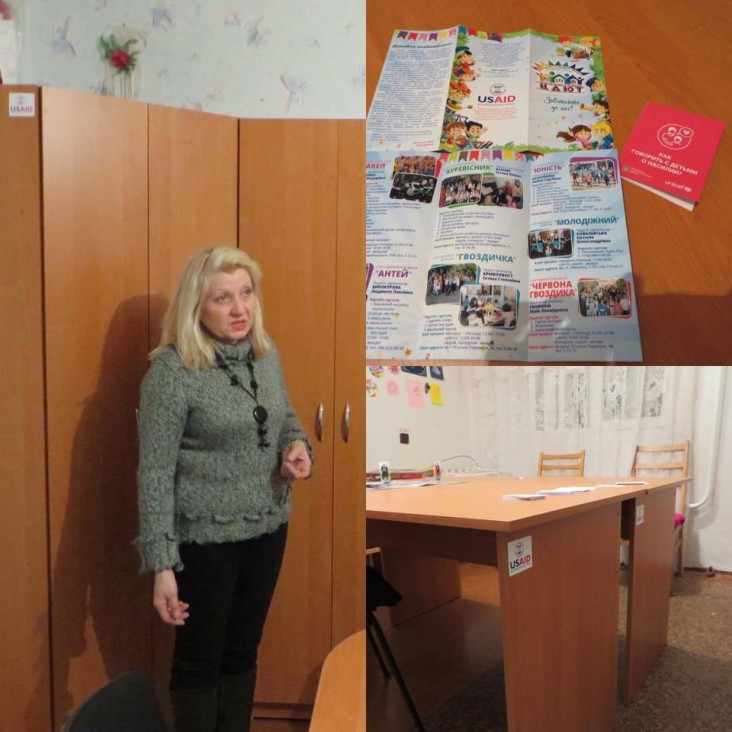Speeches Shim

January 2016—The majority of internally displaced persons in Ukraine face not only financial difficulties and trouble adapting to new surroundings, but also face prejudice from local citizens and say social exclusion is a major burden.
The revelations, which resulted from a recent survey by a local civil society organization, prompted the city of Melitopol to re-establish six youth clubs located in large apartment blocks throughout the city. The city hosts 4,500 internally displaced persons, 1,200 of whom are children.
Traditionally, these centers serve as the backbone of after-school culture in Ukrainian neighborhoods and offer youth various activities including organized sports, painting, dancing, Internet access and foreign language classes. They ensure students’ safety after school and serve as a conduit for interaction between parents. Recently, budget constraints restricted the clubs’ ability to deliver programs for schoolchildren’s evolving needs.
USAID’s Office of Transition Initiatives is providing support for displaced families in these communities and making club activities available to everyone in the apartment blocks.
The six clubs governed by the Melitopol City Council received long-needed upgrades to their multimedia and sports equipment, arts and craft supplies, furniture, and wireless Internet routers in fall 2015. Club activities were then redesigned to attract more youth and provide a place to promote a greater sense of community between old and new residents.
An average of 30 displaced persons ages 6-16 joined the 740 local children who visited the clubs in the first three months of USAID’s support.
“New furniture, sports equipment and art supplies allow us to attract more children to enjoy [the] club’s activities,” said Liliya Galianina, head of the Chervona Gvozdyka Youth Club. “This is very important because some parents do not have money to afford after-school activities for their children and now they have [the] opportunity to afford this in the youth clubs.”
According to parent feedback, the quality and number of activities in all six clubs significantly increased, along with youth engagement. Parents appreciate the free opportunities for after-school activities and now have a chance to establish new contacts in the clubs. This access to the clubs’ networks helps internally displaced persons and vulnerable families solve common problems, support each other and foster social integration.
With enhanced resources, expanded activities and a larger number of attendees, clubs can also now offer employment opportunities.
LINKS

Comment
Make a general inquiry or suggest an improvement.